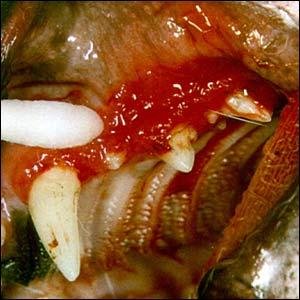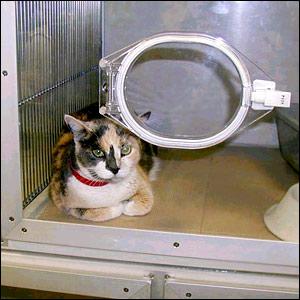Allergic reactions in dogs usually manifest as digestive problems or dermatological irritation. Dog skin allergies come in various severities from patchy, scaly skin with hair falling out to slightly more than normal amounts of scratching.
A trip to the veterinarian is necessary if your dog has a skin problem. Dermatological ailments in dogs can be caused by a wide variety of problems, and some, such as parasites, require specialized treatments that only your vet can provide. If allergies is the diagnosis, then you can begin to treat your dog.
Just because the effects show on the skin or coat does not mean that your dog was exposed to it that way. Some allergens are topical, such as rubbing on a bush that the dog is allergic to, but others are related to diet or environment. A dog that is allergic to his or her food may have dry, patchy skin or other dermatological symptoms.
Removing potential allergens from your dog's diet and environment is usually the first step in both treating him or her and figuring out what he's allergic to. If the problem resolves itself when common allergens are removed from the dog's life, then you can start reintroducing them one or two at a time, in order to figure out which ones elicit a reaction. Changing to a low-allergen dog food is especially important during the removal phase, because many regular foods contain wheat or other grains that are common allergens in both dogs and people.
In terms of the environment, removing fleas is important, because many dogs are allergic to flea bites. If the dog is not already being treated with a flea preventative, he or she should be started on one. And the home should be treated for fleas if this problem is suspected, because most dog treatments only prevent fleas from reproducing on them, not biting them a few times. Infestations are effectively prohibited this way, but those few bites can be enough to cause allergic reactions.
Though most allergens that come from the air manifest as respiratory problems, it is worth cleaning out the home if your dog displays non-specific allergic symptoms. This means removing as much dust and air pollution as possible by vacuuming, dusting with a dust-trapping cloth or duster, and using an air purifier if you have one or are willing to get one. This will lessen any reactions to dust, mites, pollen, and other airborne allergens.
Treatment like this doesn't always work for dogs who are reacting to something extremely common. Your vet can talk to you about prescribing medication if this is the case. However, if you still don't know what the problem is, consider going through the list of potential allergens a few more times with your vet, in case you missed anything. Removing the allergen itself is always better than medicating your dog.
Reactions to dog skin allergies include itching, pain, and other discomfort. In order to alleviate this discomfort while you are treating the dog, your vet might prescribe some kind of cream, bath, or medication. Remember to follow your vet's instructions, in order to make your pet as comfortable as possible while you are treating the underlying issue.

 Top 20 Cat Symptoms That Send Them to the Vet
Top 20 Cat Symptoms That Send Them to the Vet
Top 20 Cat Symptoms That Send Them to the Vet
Top 20 Cat Symptoms That Send Them to the Vet
 Aspergillosis in Cats - Causes, Symptoms and Treatment
Aspergillosis in Cats - Causes, Symptoms and Treatment Asper
Aspergillosis in Cats - Causes, Symptoms and Treatment
Aspergillosis in Cats - Causes, Symptoms and Treatment Asper
 Halitosis (Bad Breath) in Cats
Halitosis (Bad Breath) in Cats
Halitosis (Bad Breath) in Cats
Halitosis (Bad Breath) in Cats
 Dyspnea (Trouble Breathing) in Cats
Dyspnea (Trouble Breathing) in Cats
Dyspnea (Trouble Breathing) in Cats
Dyspnea (Trouble Breathing) in Cats
 Patience, Pet Insurance And Other Secrets Of Moving Your Cats In With Other Cats
In tay rolle coaster economy, a lot of people cannot easily
Patience, Pet Insurance And Other Secrets Of Moving Your Cats In With Other Cats
In tay rolle coaster economy, a lot of people cannot easily